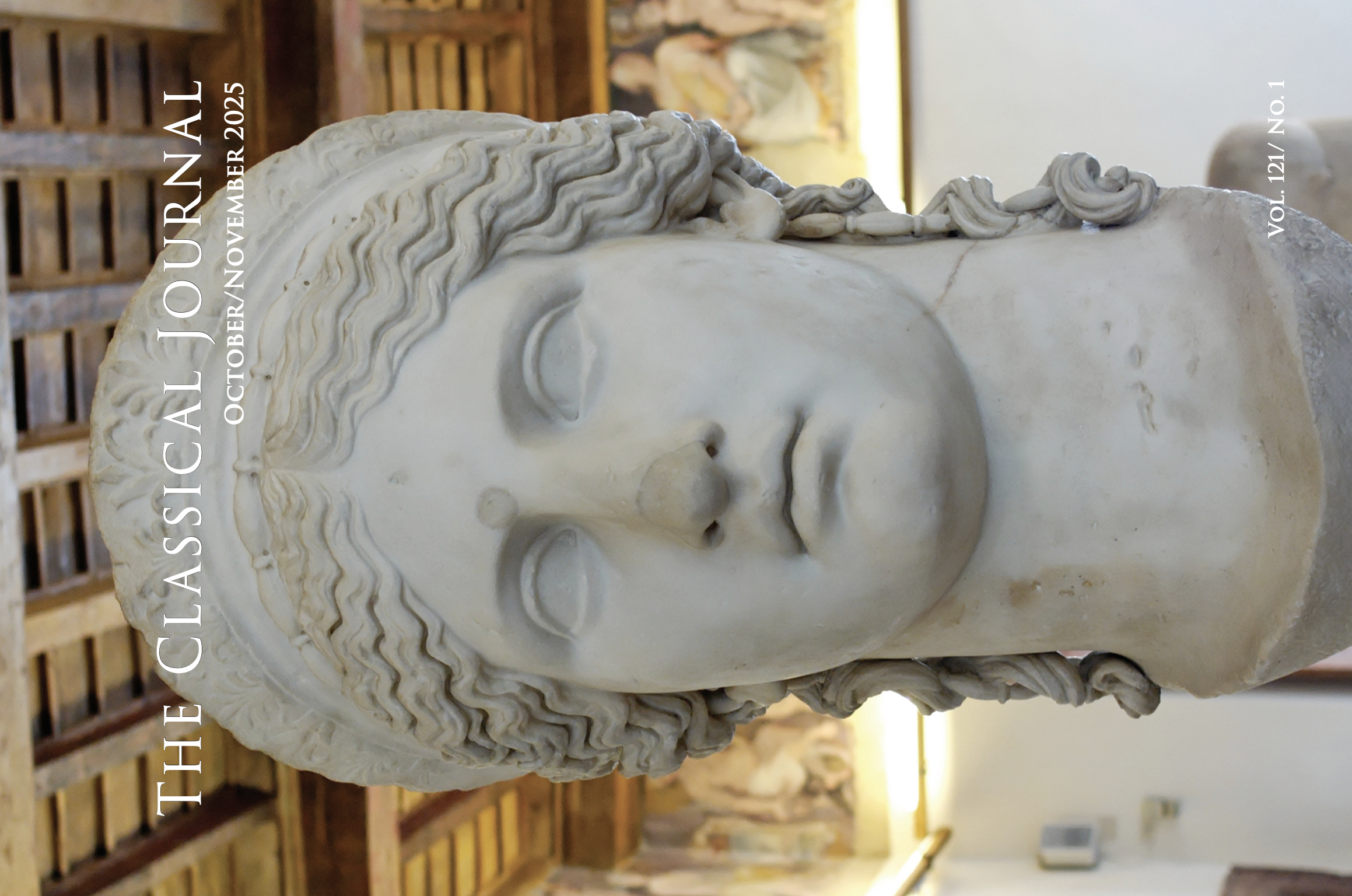The following articles are contained in CJ
114.1
Abstracts of Articles
Plato’s Metaphor of “Shadow Painting”: Antithesis and “Participation” in the Phaedo and the Republic
Contrary to the traditional interpretation of Plato’s attitude towards painting as derogatory, it has recently been rightly argued that its treatment in the Platonic corpus is too complicated to be dismissed as simply negative. In this paper I focus on Plato’s references to “shadow painting” in the Phaedo and the Republic and investigate the way in which this fifth-century pictorial technique becomes a distinctive metaphor that addresses complex ontological and epistemological problems, namely the notion of antithesis and the so-called “compresense” of opposites (enantia) in the world of Doxa, as well as the relationship between Forms and physical particulars.
Dendroepigraphy: Botanical Realities in a Bucolic Motif
The dendroepigraphy motif, in which characters carve texts into trees, can be read in light of botanical science as a hermeneutic tool for Latin bucolic poetry. Widespread interest in arboriculture among Roman elites, including agricultural treatises discussing tree and bark damage, suggests that readers and writers of bucolic were familiar enough with tree science to understand the botanical effects of carving long texts into trees. This approach reveals that the dendroepigraphy motif does more than signal the intrusion of elegy into the bucolic world, but also encourages ironic readings of inscribed texts or metaphorizes the poet’s engagement with bucolic predecessors.
Da Femina Ne Sim: Gender, Genre, and Violence in Ovid’s Caenis Episode
Neptune rapes Caenis in Book 12 of Ovid’s Metamorphoses and then grants her a wish. She replies with da femina ne sim, an utterance that has important implications for any discussion of her rape as well as the gender and genre dynamics of the Caenis-Caeneus episode. From the standpoint of genre, Caenis’ request rejects the programmatic features which would make her rape sequence a conventional Hesiodic ehoie. From the standpoint of rape, it acknowledges that women and men are vulnerable to sexual violence, a reading that is borne out in the Centauromachy where Caeneus is defeated with phallic symbols.
Christian Martyr as Homeric Hero: A Literary Allusion in Perpetua’s Passio
This article argues that the scenes in Perpetua’s Passio in which her father begs her to recant her Christianity contain allusions to scenes in the Iliad in which Hector’s family begs him to preserve his life by fleeing the battlefield. Hector’s choice to die gloriously despite the pain that such a death will cause his loved ones serves as an exemplum for Perpetua’s prioritization of her calling as a martyr over her duty to her family. The emphasis placed on the emotional cost of Perpetua’s choice is unique in early martyr narratives and may reflect Perpetua’s singular status as a Roman matrona who narrates her own martyrdom.


